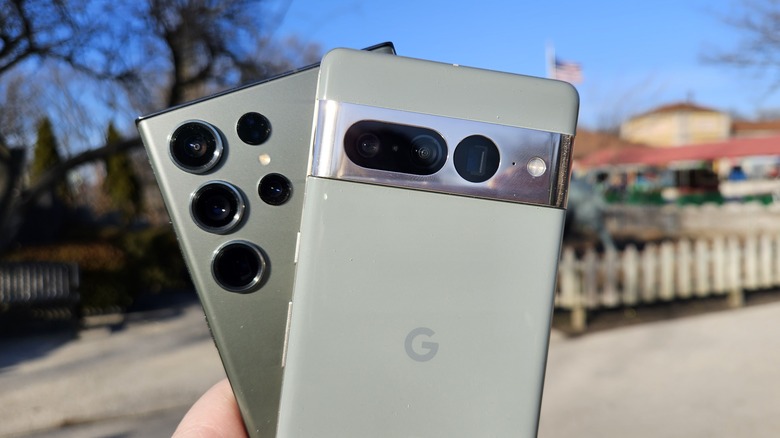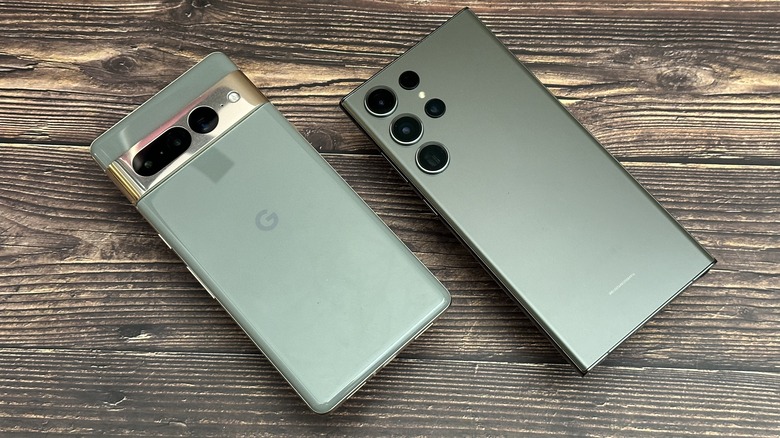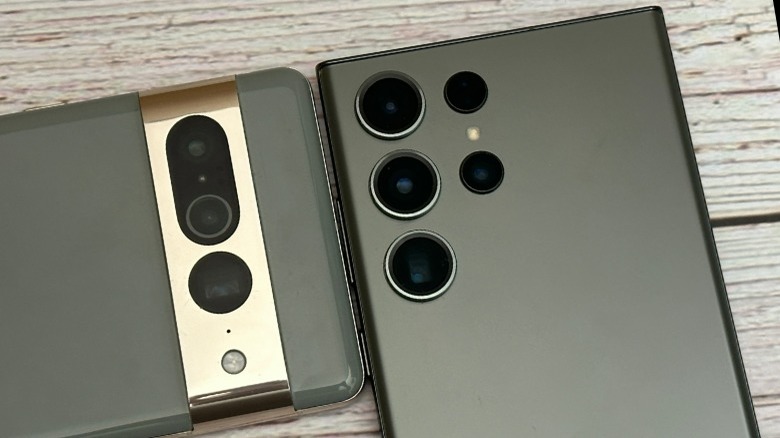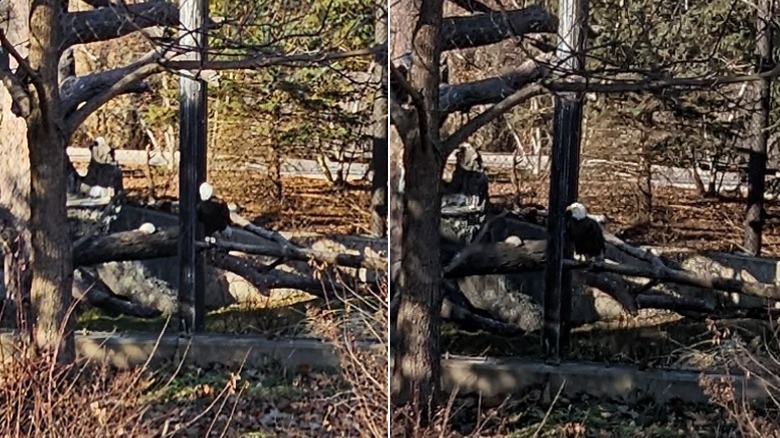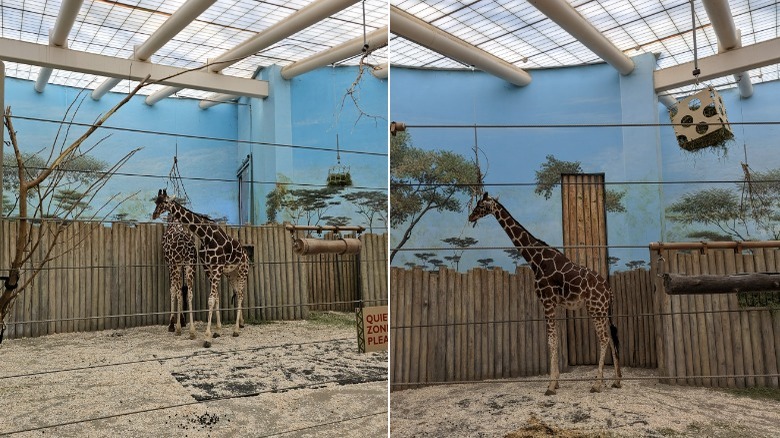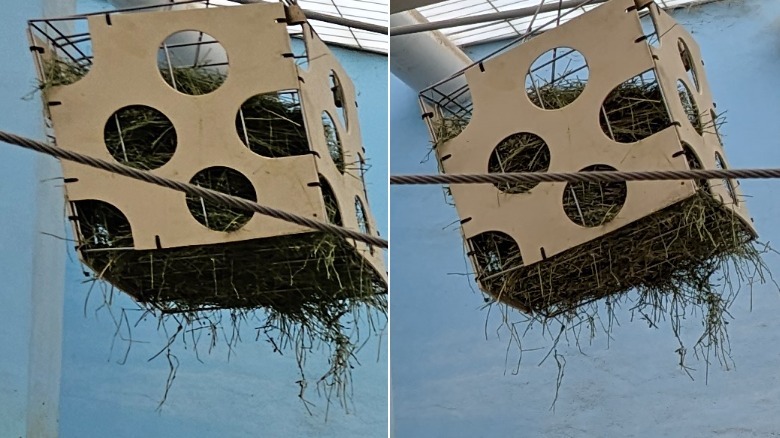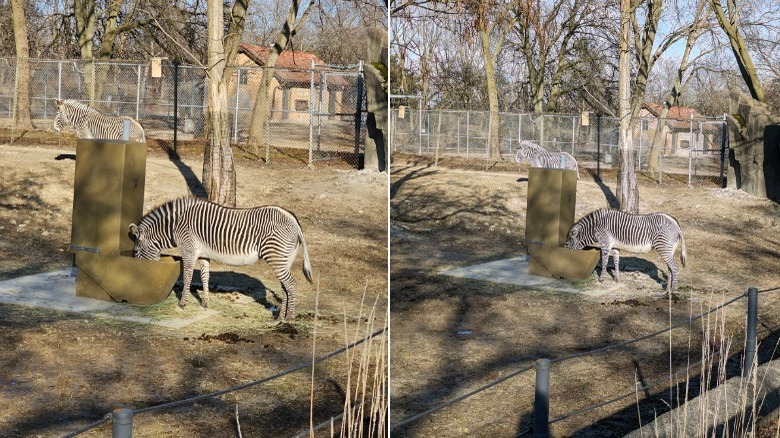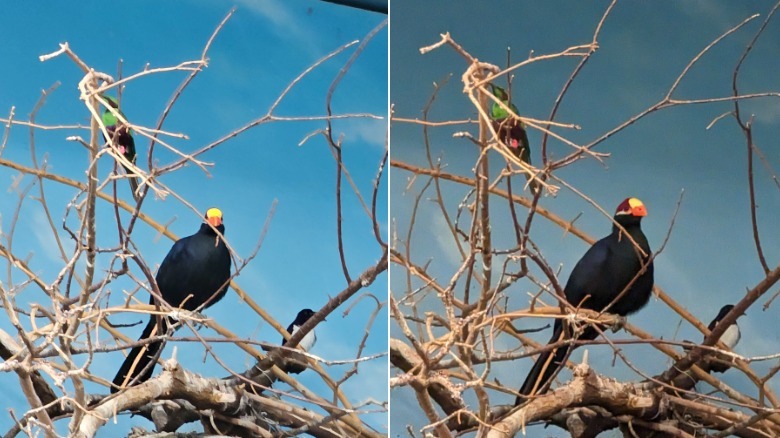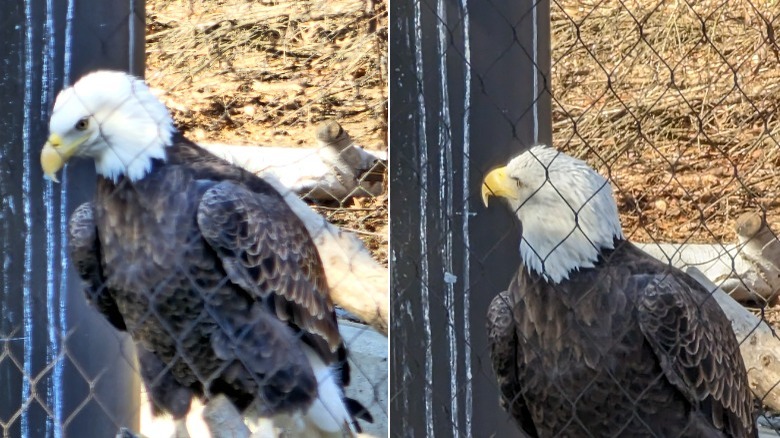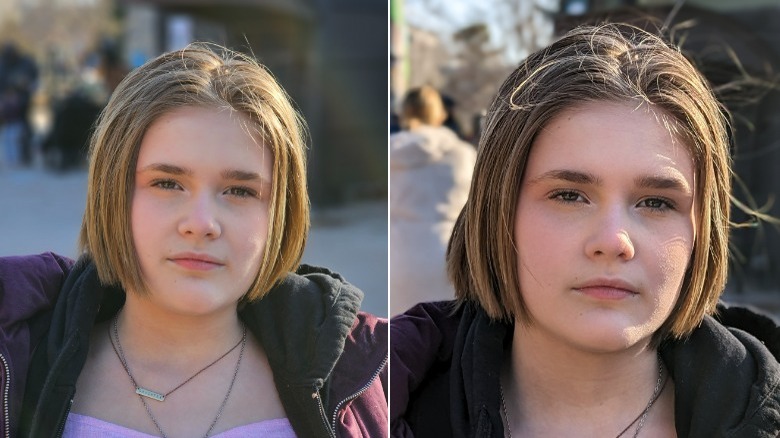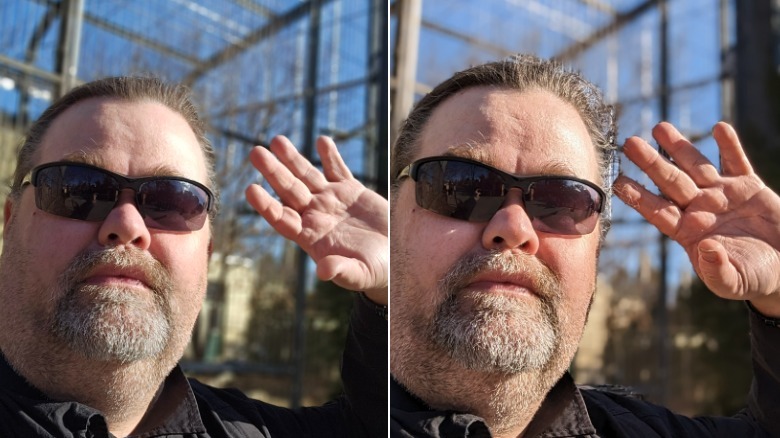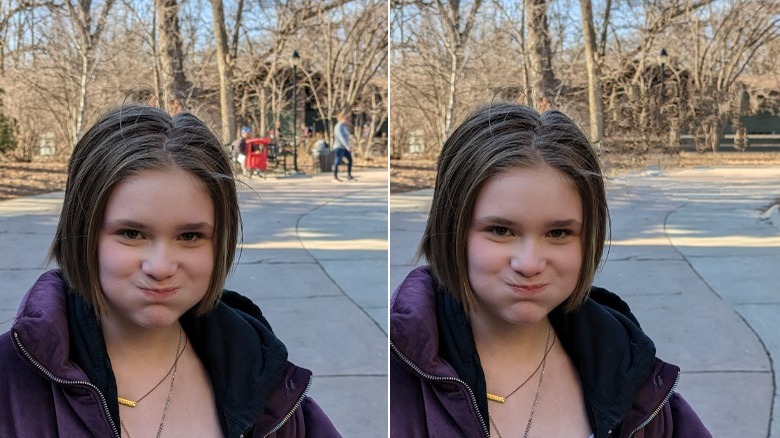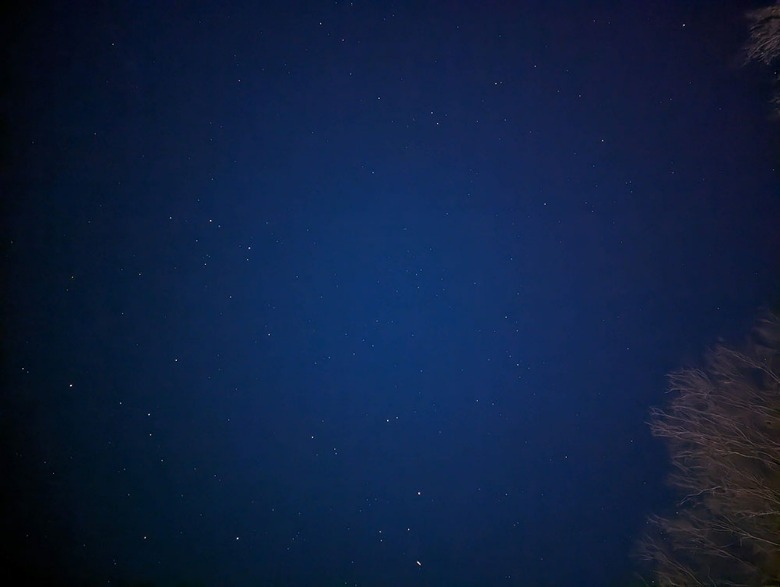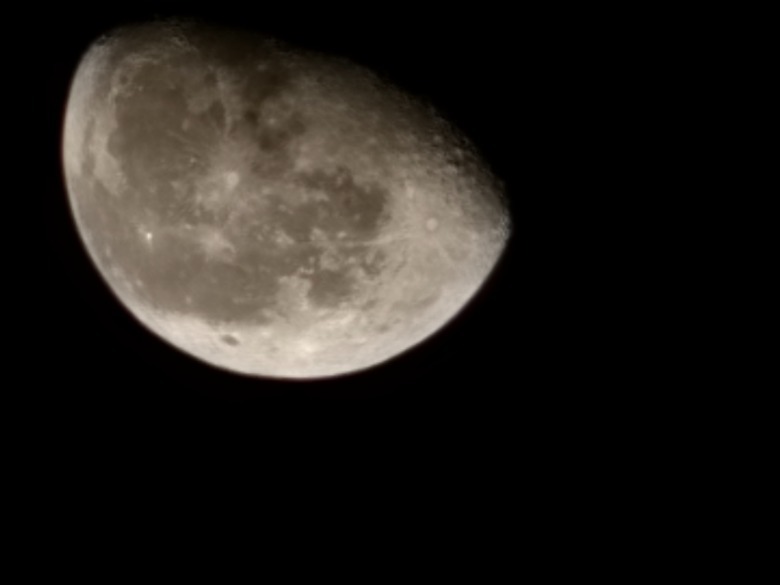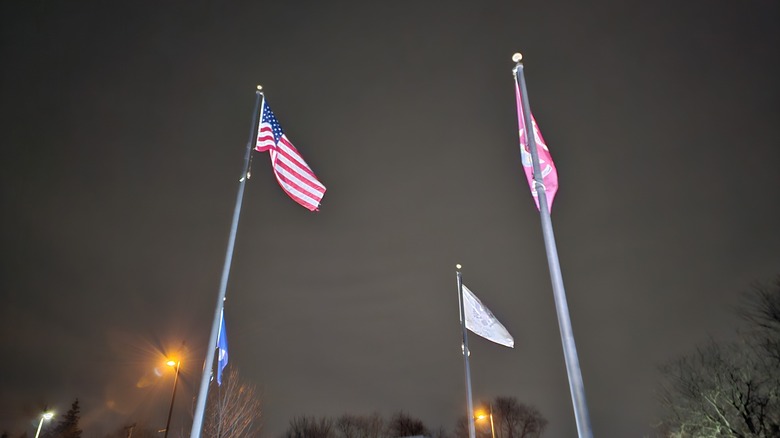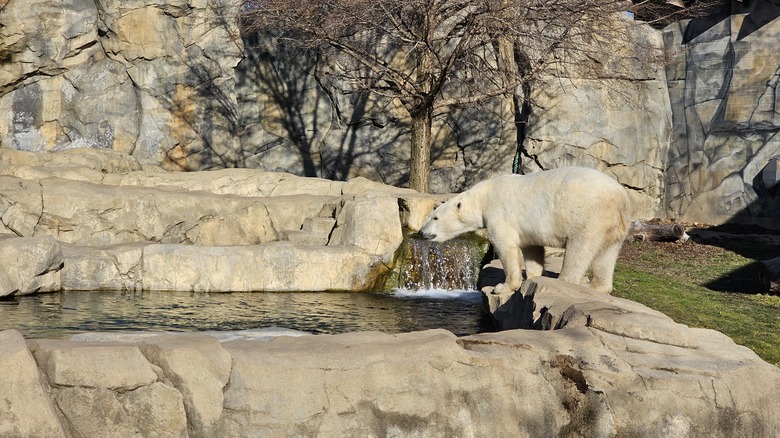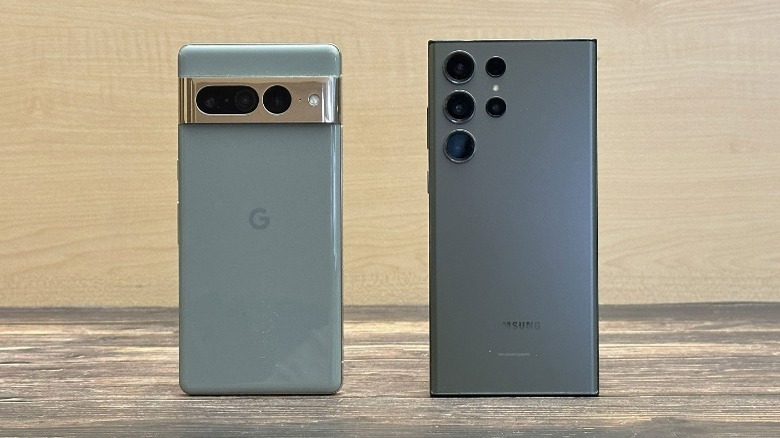Samsung Galaxy S23 Ultra Vs. Google Pixel 7 Pro: Camera Showdown
The Samsung Galaxy S23 Ultra has one of the best camera setups you could ask for on paper. There are four camera sensors ranging from an ultrawide camera to a 10x optical zoom lens. Meanwhile, on the other side, Google has long been known for its camera chops. If you're on Android and you want to take great pictures automatically, you get a Pixel — and that's pretty much the end of the conversation. So, I wanted to see how these two heavyweights measured up against each other.
Using a Samsung Galaxy S23 Ultra that I bought myself and a Pixel 7 Pro review loaner provided by AT&T, I took my daughter out for a day at the zoo and my son out for a driving lesson to my local village hall at night — and between the two, I'm starting to get a pretty good idea of where each phone stands. At the zoo, we had a crystal-clear day which resulted in some fairly harsh lighting conditions, rather than the overcast diffused light photographers tend to prefer. At night, the ambient light of my village hall gives a good approximation of what many folks will encounter in a typical nightlife setting.
Interestingly enough, the results were a little unexpected. We'll see how things shook out, but first, let's talk about the hardware.
Cameras on board
The Samsung carries a 200-megapixel main sensor with an f/1.7 aperture, a 10-megapixel 3x optical zoom lens with an f/2.4 aperture, another 10-megapixel 10x optical zoom lens with an f/4.9 aperture, and a 12-megapixel ultrawide lens with a 120-degree ultrawide lens rounding out the setup. Meanwhile, the Google Pixel 7 Pro has a triple camera setup, and fortunately for all of us, none of those lenses is a macro lens, and yes, I'm looking at you, every midrange phone on the planet. The three cameras aboard the Google Pixel 7 Pro include a 50-megapixel main sensor with an f/1.9 aperture, a 48-megapixel 5x optical telephoto lens with an f/3.5 aperture, and a 12-megapixel ultrawide lens with an f/2.2 aperture and 126-degree field of view.
By the numbers, both phones have obvious strengths and weaknesses. The main sensor on the S23 Ultra is an impressive 200 megapixels, while the remaining three sit at 10, 10, and 12 megapixels respectively. The main and telephoto sensors on the Pixel are both good sizes, while the ultrawide camera is the smaller 12-megapixel size. As I've said in the past, it's not all about megapixels, so don't get hung up on those numbers, but it's interesting that while most phones opt for larger sensors for the main and ultrawide cameras, Google went with the main and telephoto lenses, which in their reviewer's humble opinion is a good call.
The larger sensors for the main and telephoto lenses give you a wide variety of zoom options with 1x and 5x and standard resolution and 2x and 10x with a standard crop. Meanwhile, on the S23, Samsung utilizes different optical lenses to achieve a variety of zoom levels.
A word on color science and processing
One thing that I always look for in cameras is consistency in colors between the various lenses. When you're dealing with numerous sensors with various apertures, it can be difficult for a camera to produce the same photo regardless of what lens you're on. In short, as a photographer (and I'm using that term very loosely in my case) I want to be able to use any lens at all to get the shot that I want. High-end phones tend to give you that color consistency and I'm happy to report that is the case for both of these phones.
Google and Samsung both process their images to clean them up and make them presentable and piece together digital zoom photos. Samsung, as is typical for the brand tends to go for a brighter, cleaner look. Google on the other hand tends to be more color accurate to what the scene actually was, and as you'll see, that includes leaving in some "flaws" that Samsung processes right out of there. So, the color science here is excellent on both phones, but as for which you'll prefer, that's a matter of taste.
Throughout this feature you'll find images split down the center — the left example is always the photo captured by the Samsung Galaxy S23 Ultra, while the right example is always the photo captured by the Google Pixel 7 Pro.
Ultrawide cameras
Both cameras have (relatively) small sensors behind their ultrawide lenses, and because of that, you lose a lot of detail. It's most noticeable in these photos I took of a bald eagle from a good distance away. At a glance, the Samsung photo looks brighter and would probably share better on social media, but if you look closer, you can see one particular detail is lost.
At 100% crop above, you can see the eagle is completely lost on the S23 Ultra, while the photo from the Pixel 7 Pro at least looks like a bird. Put simply, Google's processing here tends to preserve detail over color, while Samsung goes the other way. There's nothing fundamentally wrong with either approach, but in general, I prefer the Pixel photo because of that preservation. I can always apply filters after the fact to brighten a photo, but I can't pull more detail out.
Main cameras
When shooting with the main cameras, we headed indoors to visit the giraffes, which unfortunately weren't as cooperative with staying in place while I snapped close to a dozen photos. What can you do? Similar to the results with the ultrawide camera, Samsung once again focuses on a brighter photo resulting in almost a glow in the lines between the giraffe's patches, while Google preserved a more accurate representation of the animal's coloring. Again, while the Samsung photo might look better on social media, I tend to prefer the Pixel's photo since it's closer to what the animal actually looked like.
The Pixel also preserves more detail in the shadows as evidenced by the box of hay hanging from the ceiling. On the bottom of the box, the Pixel manages to grab much better detail in the hay hanging down while the S23 Ultra overprocesses the hay and makes it and the holes on the side of the box look unnaturally smooth and fake-looking.
Zooming in
The first level of zoom for the S23 Ultra sits at 3x while the first level of zoom for the Pixel 7 Pro sits at 2x. When I first looked at the iPhone 14 Pro which has both 2x and 3x, I said that I'd much rather have the latter over the former. Six months of using the iPhone 14 Pro have adjusted those perceptions and I can honestly say they're both pretty valuable. In this case, I'm going to give the initial nod to Samsung, just because it lets you get just a little bit closer to your subject, and as a father, that's important to me. Also, at the zoo where animals tend to be farther away, more zoom is better.
As for going beyond that, for purposes of this comparison, I stuck with 10x on both phones, despite the Pixel 5x capability, which by the way is quite nice. Interestingly enough, at the 10x zoom level, both phones are pretty on par with each other. The optical zoom on the S23 Ultra doesn't do significantly better, nor worse than the hybrid zoom that the Pixel brings. That was a surprise to me since I'd assumed that optical is always the better way to go. In this case, the Google Pixel 7 Pro really held its own.
Zoom to its limits
When you take things up to 30x, both phones are technically capable of it, though you're not going to be terribly pleased by the results from either phone. I'm going back to the eagle here to show you both how zoom performs and since I already showed you the how far away from the subject I was. Both phones are in "hybrid zoom" mode at this point and you're actually maxing out the Pixel's capability (while the S23 Ultra can – but really shouldn't – go up to 100x). The super zoom on the S2X series of phones (including the S21, S22, and this generation s23) all hit a wall at 30x with anything beyond that turning into a blocky pixelated mess. Still, I was surprised that the Google Pixel phone did an ever-so-slightly better job, despite the fact that this is Samsung's third year in this space.
Don't get me wrong, Samsung's 100x zoom when used to capture hand-held shots of the moon is still nothing short of black magic, and I love the fact that it can do that, but all the same Google is showing up its rival here pretty well.
Portrait mode
Portrait mode with both phones is really good, though I have to give the nod to Samsung in this particular category, but I want to point out a plus for the Pixel in this case. Specifically, the Pixel is much better at preserving the detail on the face of your subject including tiny bumps and textures on the skin. Samsung smooths all of that out without even enabling any kind of beauty mode (or at least giving you the option of turning it off). But we're here to talk about the background blur. In short, it's very good on Samsung's end. The Pixel had trouble handing wisps of hair (which may be due to an unfortunate gust of wind at that particular moment) while Samsung did a pretty good job and picking out even individual hairs.
This is also true of the selfie camera where the Pixel 7 Pro had a lot of trouble picking out my hand from the chain link fence behind me, resulting in something of a blocky mess. The Galaxy S23 Ultra had no such problem in the same situation, so this is just one area where the Samsung phone outshot the Pixel.
Other special features
Of course, one of my favorite features that the Google Pixel phone has that no one else has is the Magic Eraser. If you're not familiar with Magic Eraser, it's basically AI-powered Photoshop on your phone. With Magic Eraser, you can select unwanted parts of your photograph and the Pixel will erase them auto-magically. In the photos above, you get a sort of before and after the Magic Eraser has been applied. I was able to remove a random family from the background of this shot of my daughter. It's pretty great, and it doesn't always work beautifully, but it's pretty great when it does.
The above example is the only split image in this article where both sides were captured by the same camera — that's the Google Pixel 7 Pro, with (as mentioned) a before-and-after image demonstrating its Magic Eraser feature.
The Pixel 7 Pro also has Astrophotography mode which allows you to capture incredible nighttime shots. Above you'll see one example of a photo captured with the Pixel 7 Pro on a clear winter evening. The Pixel 7 Pro's Astrophotography mode works best when you're able to work with a tripod or some other surface that'll allow you to keep the device steady while it's gathering light. In this case, the phone was balanced face-down at the top of a wooden fence post.
Meanwhile, the aforementioned 100x zoom on the Galaxy S23 Ultra is really only useful if you want to take a handheld photo of the moon, in which case it's really impressive. I'll remind you, that photo was taken with a phone.
Nighttime photography
Speaking of shooting at night, Samsung is especially proud of what it calls "Nightography." Specifically, it uses the 200-megapixel sensor to suck in a ton of light to capture detail and it really shows. While the Pixel 7 Pro does a fine job at night, the Samsung Galaxy S23 Ultra does an almost universally better job for any subject. From taking photos of my son to statues to buildings, shots are generally cleaners, with more detail and less grain. Even moving subjects, such as flags flapping in the wind are pretty crisp, which is great to see.
Interestingly, the one area where the Pixel did a bit better, was in zoom shots. Once you leave the 200-megapixel main sensor on the S23 Ultra, you deal with much smaller apertures and much smaller sensors, which combine to let in less light, so it's not ideal. You would think a phone that is built for zoom would do a better job in this area, but I prefer the Pixel for most night shots above 1x in zoom.
Video at night
When it comes to video at night, the Samsung is the far better camera, and Nightography really shines here. My typical complaints with nighttime video involve stabilization, focus, and grain, and the Samsung exhibits basically none of those issues. There is a bit of a problem with stabilization, meaning you can really tell when the phone shakes as I walk, but it's not nearly as pronounced as most phones — even high-end phones — that I have tested under these circumstances. I'm not saying I would shoot a movie at night, but you can get away with some decent video when the sun goes down. The biggest issue I noticed was a bit of banding in the night sky caused by the lights on the ground. But really, as nighttime video problems go, that's pretty minor.
The exception to that is in the selfie cameras, which were terrible on both phones, full stop. This isn't particularly surprising — it's rare you find a device that employs a front-facing camera that's anything better than the basics... but still, they aren't great.
Both the photos above and below were captured by the Samsung Galaxy S23 Ultra with its back-facing camera array.
Video during the day
During the day, both of these phones performed admirably, though I would give a slight edge to the Galaxy S23 Ultra. Both phones have exceptional stabilization meaning you can capture smooth video even when walking. The cameras transition from darkness into light (such as walking through a tunnel) smoothly while preserving great detail. Interestingly, both phones suffered from a bit of judder when in the darkness of the tunnel, despite Samsung's excellence when the lights are down full time.
But both phones look like they're mounted on a track when the lighting is solid which is great to see. Both phones also had to deal with a bit of sun glare, which Samsung handled a bit better, but really neither phone really outperformed the other in any significant way. Both phones are pretty great when it comes to video during the day, which is great news, but also low-hanging fruit.
Overall conclusions
Overall, to put it very simply, I think I prefer the Google Pixel 7 Pro for photography and the Samsung Galaxy S23 Ultra for videography. As one would expect at these price points, both phones perform remarkably well, which is really great news. But, considering the S23 Ultra retails for $300 higher than the Pixel 7 Pro, I can't say that the S23 Ultra is that much better of a camera. Of course, there's more that goes into the price, including processor, storage, and whether you prefer Samsung's flavor of Android or Google's. But from a strict camera perspective, the only way I would recommend the S23 Ultra over the Pixel 7 Pro would be in cases where low-light videography is important. That's a pretty niche use-case.
Personally, I think Magic Eraser is a pretty major factor as well. We've all taken photos with that extra detail in the background that you didn't notice at the time. Magic Eraser is that good. But when it comes to the unicorn of smartphone photography — nighttime videography — Samsung seems to have captured a bit of magic, which will bear paying attention to going forward, because it ultimately gives the S23 Ultra a more complete photographic package.
